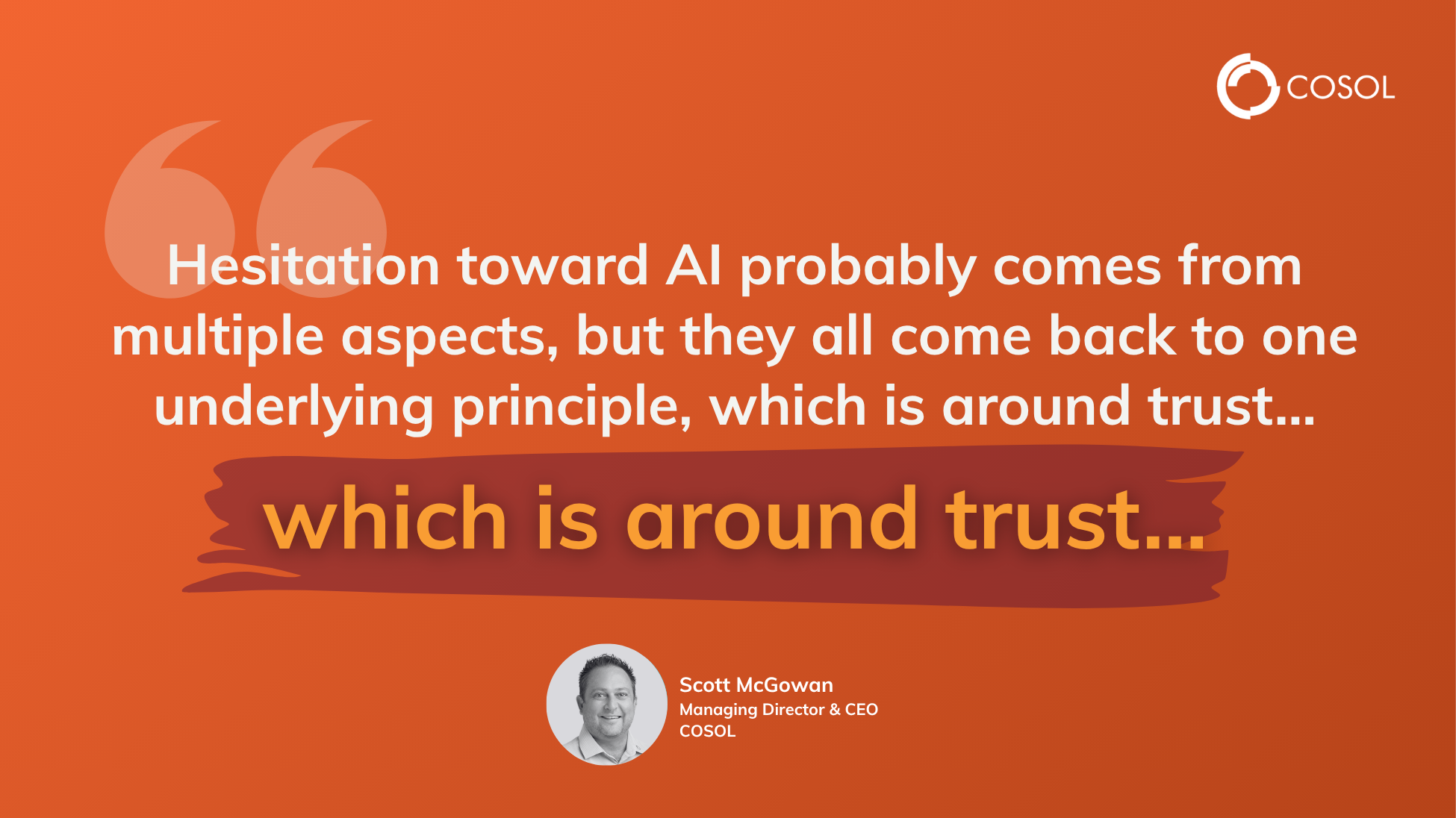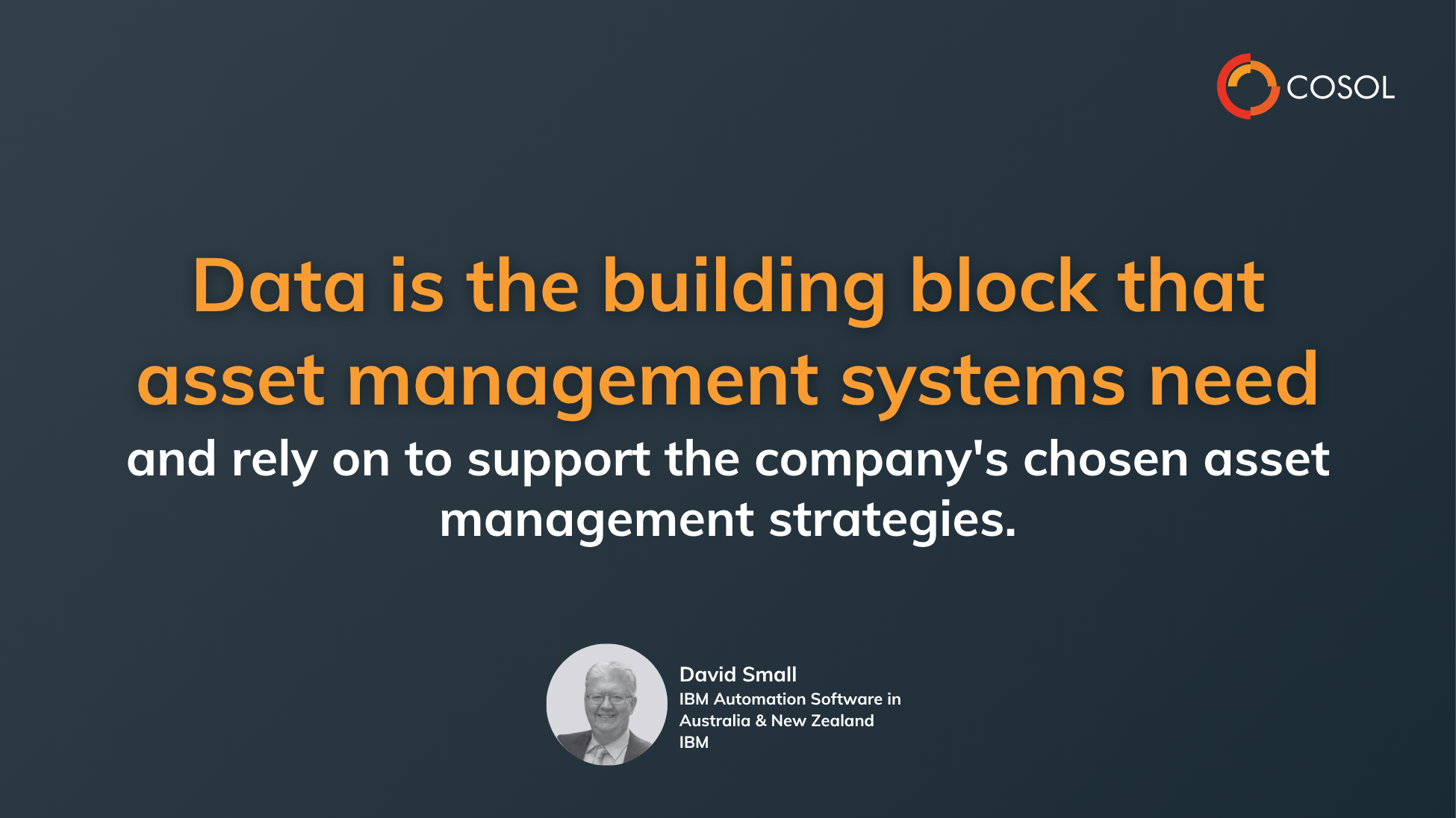At a glance
-
Asset leaders face pressure to deploy AI, but trust and data quality must come first.
-
COSOL’s walk-jog-run framework helps organisations adopt AI at the right pace.
-
Solving real-world problems like data quality builds trust in AI early on.
-
AI can reshape operating models, but only with a clear purpose and planning.
Digital transformation is no small undertaking. With companies managing critical infrastructure and assets potentially worth billions, the stakes are too high not to have a sensible, staged approach to integrating AI.
There’s increasing pressure from boards on asset-centric business leaders to lunge for an AI project as a means to quickly manifest efficiencies in their operations.
However, whether organisations are curious, excited, motivated or feeling like they’re under boardroom duress to deploy an AI solution into their asset management workflows, strategic considerations about how best to integrate these tools must come first.
AI hype, lack of trust in AI adoption and market pressures
Modern asset management across industries like mining, utilities, public infrastructure, road and rail represents a massive task in managing and analysing data.
Scott McGowan, CEO at COSOL, believes AI represents a lot of potential in the asset management sector, but that doesn’t mean to run out and invest in an AI solution just because your board thinks you should.
Observing the proliferation of AI adoption hype across industry events, social media and the press, McGowan is concerned that market pressures might push organisations in asset-centric industries to try and run with AI before they can walk.
"Everyone expects everyone to build an AI division in-house, but if you’re a mining or infrastructure company, the reality is that's not your core business,” he says. “Your core business is to produce iron, or coal, or copper, or to run trains and provide services to the public.”
Without reason or a roadmap, the discourse around AI integration often represents an unwelcome distraction from the primary mission of asset-centric industries.
Adoption pressures are being met with a degree of hesitation from business leaders due to the seemingly untested nature of AI in an asset management context and an absence of established trust, particularly in data governance and privacy.
Without reason or a roadmap, the discourse around AI integration often represents an unwelcome distraction from the primary mission of asset-centric industries.

“Trust is built on experience and understanding, and I think the challenge we have with AI as it stands today, is that the algorithms are designed in such a way that there’s little to no transparency as to the decision-making methodology those algorithms have.”
“Data foundations must also be trusted, and solutions that act on that data must be trusted to do so correctly. Organisations need to trust that any solution they adopt is repeatable, robust and resilient.”
First steps: Learning to walk with AI
AI transformation is a journey, not a big bang project. Organisations that approach their AI maturity through a lens of a walk-jog-run approach based on the true needs of the business are much more likely to find value in implementation versus those that seek shiny solutions.
In the first instance, the walk phase, McGowan urges that AI has to be solving an existing problem.
“There are a lot of AI initiatives and a lot of technologies looking for a problem; I think that’s the wrong way to go about it,” he says.
“The walk concept is solving a discrete problem that already lies within the technology space. If you think about self-solving and trust in data, using AI to resolve, infer, continually assess or optimise data quality is actually a really interesting place to start.
“Through this approach, AI starts to solve its own trust problem by addressing one of the initial play areas. The opportunity around master data quality and the ability to link physical equipment with digital representations for accuracy is, in my view, the first part of the AI journey in our context.”
David Small, Principal Sales Leader for IBM Automation Software in Australia and New Zealand, echoes the need for organisational data layers to be updated and as accurate as possible to enable smarter asset management.

Slowly building AI momentum
As you quicken the pace in your AI modernisation journey, companies might select an AI partner to help them further investigate ways and means AI can be implemented – be it in a proof of concept or solving discrete problems.
Partnering with someone who specialises in AI can help companies build capability within the business from a cross functional perspective around asset management.
Running with an AI-infused business
When a company is ‘running’ with AI, it is essentially changing its operating business model. With each new wave of technology, transformation initiatives should not be about solving technology problems, but enhancing the operational capability of the business.
Of course, McGowan notes that business parameters will need to be changed to enable technology to solve business problems if the integration is significant. In the case of AI, this may look like redefining career paths, redefining the operating model and the job descriptions for individual components and then rolling out the purpose of AI.
- Scott McGowan, Managing Director and CEO of COSOL
“I can almost see a place where you define a job description for the AI agent or component, and it performs that task, has regular performance reviews, learns from its mistakes, and is managed like anyone else in a business,” he adds.
COSOL and IBM hosting roundtable learnings
Exploring a path forward for AI in asset-centric industries will be the subject of a series of roundtables that COSOL will be running across Australia from June 2025.
While the sessions are closed, an insights whitepaper has been released, highlighting disucssions, pain points and strategies business leaders face.
COSOL are IBM Gold Partners and IBM Maximo specialists with over 15 years experience helping asset-intensive organisations implement and upgrade their EAM systems as part of their asset information ecosystem.



